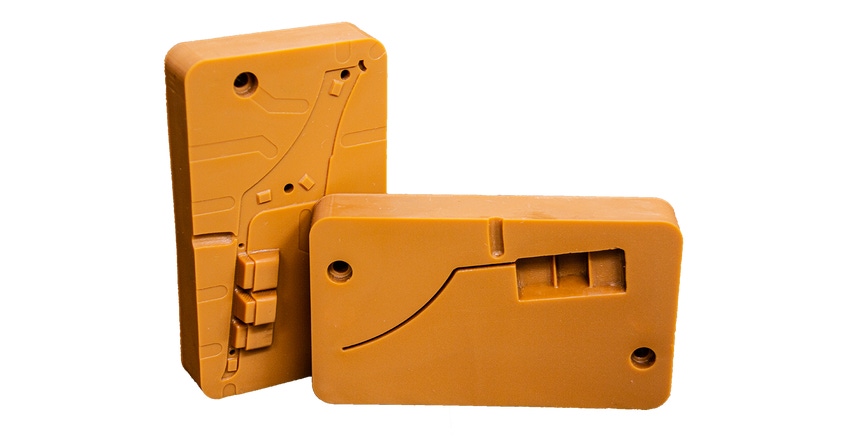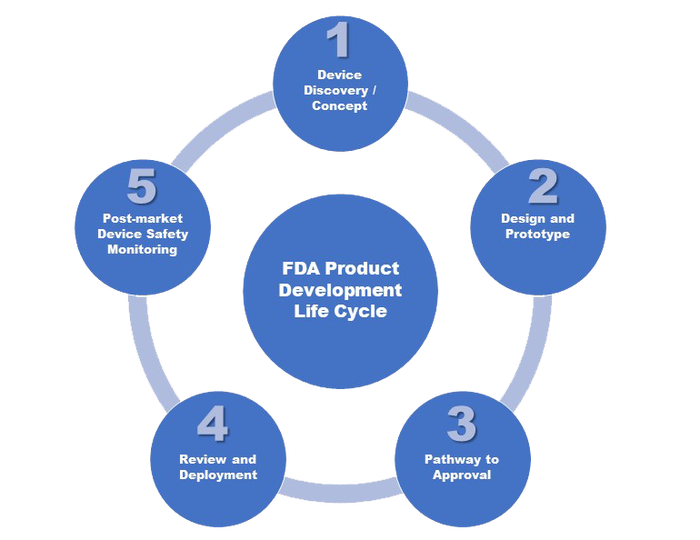What Is the Right Quantity of Prototype Parts?
Determining the optimal number of prototypes for testing and validation can help accelerate the new product development process.
July 23, 2021

Ben Arnold
Speed to market is critical. In our hyper-competitive industrial and consumer industries, new product development is moving faster than ever before with no signs of slowing down. OEMs, suppliers, and contract manufacturers are struggling to meet the demands of their customers, and are actively searching for new solutions that improve processes and meet deadlines. The technological advances in rapid prototyping have made it possible for product developers to fail fast and fail often when it comes to product testing and validation. However, many design engineers and manufacturing specialists are now challenged to further optimize the product development life cycle, and must identify efficient ways to produce the right quantity of prototypes to proactively solve problems and get to market first.
New product development (NPD) often is a complex process that commonly introduces unforeseen challenges that extend timelines. This inevitably leads to production delays, reduces the competitive advantage and, of course, erodes profitability. In order to effectively increase your NPD timeline, what steps must be taken throughout the process? What should your early-stage prototype development look like? How many prototypes are necessary for testing and evaluation purposes? When would it make sense to build 100+ prototypes?
|
The following article provides quick guidance to determine the right quantity of prototypes throughout the product development life cycle, and how to advance NPD timelines.
Early-stage product development
The value of having a physical prototype in hand can never be underestimated. What used to be a highly manual process has improved immensely with 3D printing, machining, and other technologies that enable highly accurate parts representative of the original engineering design and purpose. During early-stage product development, one-off prototypes are created to immediately test form and fit. For example, electronics manufacturers developing new clamshell designs must insert circuit boards, wires, harnesses, and so forth that make the product operational. Multiple iterations are typically required, and it's common that engineering changes may lead to completely new designs and overhauls.
Depending on access to prototyping resources — technologies or materials — engineers find themselves either producing parts in-house or outsourcing to contract manufacturers. It’s challenging to determine how many one-off prototypes will be necessary for your specific application but it’s important to make an educated guess since outsourcing prototype parts can become expensive.
Recommendation: Typically, 3D printing is the ideal process for one-off prototypes due to speed and accuracy benefits. In some scenarios machining is a great option, so it ultimately depends on your early-stage product development requirements. Consider how many different iterations you may go through and what type of materials are necessary to test form and fit. The single caveat to this process is the ability to test functionality and part performance.
Functional testing and feedback
Successfully advancing the NPD timeline relies on the ability to make quick improvements. While the definition of quick is subjective, the process of prototype testing and collecting engineering feedback is not. This is about determining the absolute qualities of the product and ensuring that the mechanical properties will meet the required standards and customer expectations. Once a prototype design is settled upon, the next stage of the NPD life cycle is functional testing. Note: Poor results during functionality testing may force redesigns and revisiting the early-stage process.
It’s not uncommon that an engineering department will require 30 to 50 identical prototypes for testing or feedback purposes. Depending on the product intent, this includes measuring impact resistance, ductility, bending, fatigue, UV resistance, and more. In addition, there are multiple stakeholders involved in NPD that may or may not be physically located in the same place. Having access to this quantity of prototypes enhances engineering communications throughout multiple departments and eliminates unnecessary delays. Functional testing alone justifies the need for many parts, but the intangible benefits that come with the ability to quickly communicate internally and externally will certainly lead to faster time to market.
Recommendation: Proper examination during the functional testing and feedback stage requires multiple identical parts. This type of low-volume production request can be accomplished with 3D printing, machining, or molding processes. However, the time to produce this quantity of parts with 3D printing negates the inherent speed benefits, and traditional molding tools can be expensive, especially when a final design isn’t approved. Determining your break-even point between these technologies will make a difference to the bottom line and keep your product development ahead of schedule. Learn how DeMarini Sports tackled this dilemma in a case study published on the Fortify website.
Product launch
The healthcare market is notorious for releasing products early to high-end users and influencers. A soft launch approach such as this happens frequently for all industries, but the medical device market is certainly unique. Gaining real-world feedback from those utilizing the product in its operational environment is uniquely beneficial for several reasons:
This is the last chance for engineering to make any design changes.
It enables the marketing team to validate messaging, branding, and packaging.
Early adopters are more likely to become credible testimonials for your product leading to new sales opportunities.
|
As your business enters the final stage of development and prepares for product launch, engineers may be tasked with producing 100+ prototypes for beta testing. The prototypes, or early products, must look, feel, and function as intended. At this time, it’s important to take an honest assessment of your 3D-printing capabilities and acknowledge that this technology may not be the appropriate solution. Cost, material limitations, or a combination of both, can be barriers to low-volume production parts.
Recommendation: For the most part, the design is complete and your product is ready to go to market. It’s rare in the 3D-printing industry to find a technology that can simultaneously print end-use materials that meet acceptable cosmetic qualities. This limits the use of 3D printing for low-volume production. While molding is a much better option to produce parts that meet function and aesthetic standards, tooling can get very expensive — especially when mistakes or design changes lead to multiple iterations.
Is there a between option?
3D-printed mold tooling is a bridge-to-production method that enables engineering teams to combine the low cost of 3D printing with the productivity of injection molding. When your team requires 30 to 100 identical prototypes to quickly advance the product development life cycle, 3DP IM tooling may be the solution. It’s an inexpensive way to quickly redesign and print tools on demand that are injected with end-use materials and exceed quality expectations.
|
About the author:
Ben Arnold leads Fortify’s sales and marketing efforts as the VP of Business Development. Arnold joined the 3D-printing industry in 2006 and has decades of experience helping companies bring new capital equipment technology to market. He has been on the forefront of several industry innovations, including multi-material polymer printing (Objet Connex); multi-laser metal printers (SLM Solutions); and the evolution of MIM-based metal printing (Desktop Metal). Arnold brings this experience to his role at Fortify working with customers to identify key applications for Digital Composite Manufacturing. He holds BSME (WPI) and MBA (Northeastern) degrees.
You May Also Like





